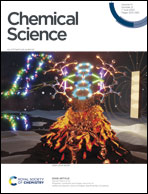Chiral aldehyde catalysis enables direct asymmetric α-substitution reaction of N-unprotected amino acids with halohydrocarbons†
Abstract
The direct catalytic α-hydrocarbylation of readily available amino acids with halohydrocarbons is one of the most straightforward methods leading to α,α-disubstituted non-proteinogenic α-amino acid compounds. However, all the reported methodologies depend on N-protected amino acids as starting materials. Herein, we report on three highly efficient aldehyde-catalyzed direct α-hydrocarbylations of N-unprotected amino acid esters with aryl-, allyl-, and benzyl halides. By promoting a simple chiral BINOL-aldehyde catalyst or combining catalysts of a chiral aldehyde and Lewis acid ZnCl2, the asymmetric α-arylation, α-allylation, and α-benzylation of amino acid esters with the corresponding halohydrocarbons proceed smoothly, producing α,α-disubstituted α-amino acids in moderate-to-high yields and good-to-excellent enantioselectivities. The asymmetric α-arylation reaction can be applied in the formal synthesis of the clinical candidate compound (+)-AG-041R. Based on the results given by control experiments, three reaction models are proposed to illustrate the stereoselective-control outcomes.



 Please wait while we load your content...
Please wait while we load your content...